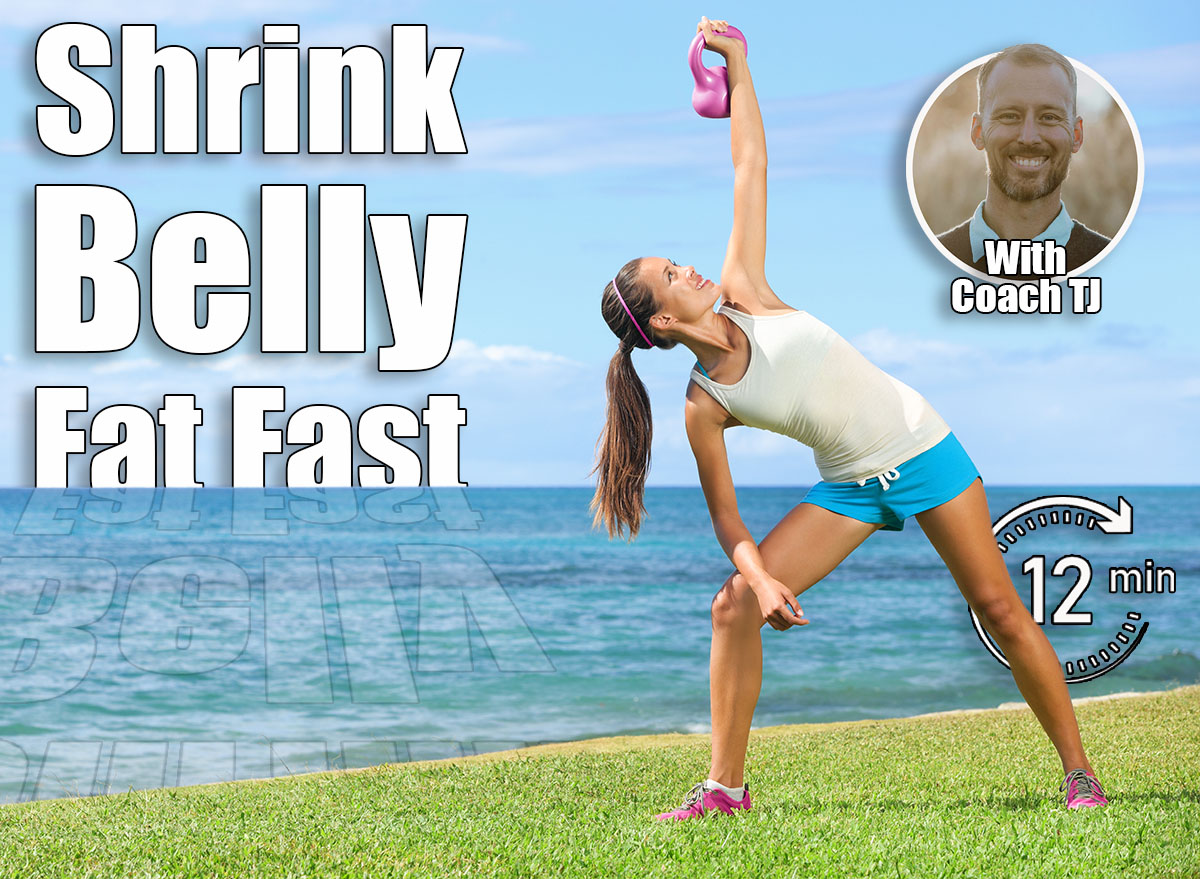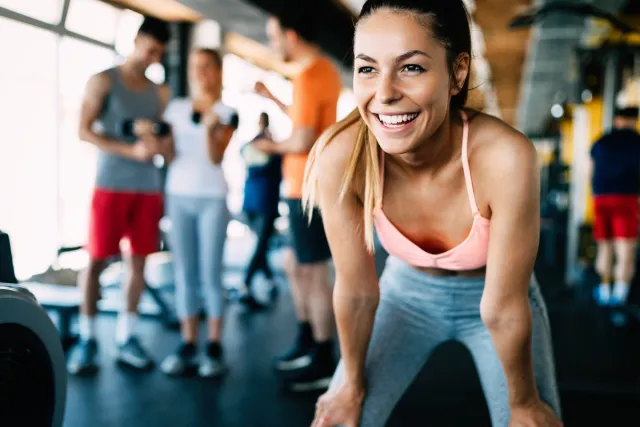4 Standing Core Exercises That Flatten Belly Faster Than Planks After 50

You’ve been doing planks religiously, but that stubborn belly fat just won’t budge. The truth is, after 50, your body responds differently to traditional ab exercises, and what worked in your 30s and 40s might not be cutting it anymore. Standing abdominal exercises offer a more effective approach by integrating all of your core musculature—including your abs, glutes, pelvic floor, and low back muscles—while burning more calories than static floor exercises.
Below are my four favorite standing core exercises. All of them are described with the kettlebell. Don’t worry if you don’t have a kettlebell—you can use a dumbbell, a water bottle, a water jug, or you can just use your body weight. Don’t let a lack of equipment be an excuse for not taking care of your health and fitness. Read on to discover four standing core exercises that will help you flatten your belly faster than planks ever could.
Why Standing Exercises Work Better for You

Belly fat becomes harder to lose after the age of 50 due to hormonal changes, sedentary lifestyle, poor nutrition, high stress levels, and poor posture. While the plank is a fantastic exercise to maintain in your routine, it is not the end-all be-all of abdominal training, especially when the goal is to manage belly fat.
Standing abdominal exercises integrate all of the core musculature—your abs, glutes, pelvic floor, and low back muscles. These exercises help maintain balance in the tension between your abdominal muscles and where they attach on your pelvis, leading to better posture and reducing the appearance of your belly. Lastly, these exercises are great calorie burners, which can contribute to overall fat loss.
4 Standing Core Exercises to Flatten Belly After 50
Kettlebell Windmill
The kettlebell windmill is a total body exercise that requires a large amount of core work and flexibility. It helps integrate the upper and lower body and develops shoulder stability. The connective tissue, or fascia, of the pec connects with the fascia of the abdominals (this is your Cooper’s fascia). You could almost look at it like the pec is an extension of the abdominals, which is why this exercise integrates the entire arm to the core.
How to do it:
- Press the kettlebell over your head and maintain your arm nice and straight
- Take a wide base, wider than your shoulders, and make sure your feet are pointed forward
- Turn your head and look at the kettlebell the entire time
- Without letting the arm that is holding the kettlebell bend, slowly start to twist your body and reach towards the floor with the opposite hand
- Don’t worry about how far you go down while learning the exercise
- Once you get proficient, the goal is to have your bottom hand touch the floor between your two feet
- Return to the starting position and repeat
Sets and reps:
- 3 to 5 sets
- 10 to 15 repetitions per arm
Common mistakes:
- Letting the knees bend
- Letting the elbow bend
- Trying to go too far before you have developed the flexibility
- Holding your breath
Kettlebell Wood Chop Lunges
Kettlebell wood chop lunges are a great way to integrate the hips and the abdominals. This exercise builds strength and endurance in all three planes of motion, meaning you are building strength that transfers into your day-to-day activities, all while helping flatten your belly and develop core strength. The kettlebell lunging wood chop also closely mimics the gait pattern—this can make your running, walking, and sprinting much more efficient.
How to do it:
- Hold the kettlebell on either side of the handle
- Step forward with one leg, allowing both knees to bend at the same time to roughly the same degree
- As the lead foot hits the ground, continue to side bend and twist towards the front leg
- Drive yourself out of the lunge position and twist back to the beginning position
- Alternate legs for the most efficient workout
Sets and reps:
- 3 to 5 sets
- 8 to 12 repetitions per leg
Common mistakes:
- Using too heavy of a kettlebell
- Not maintaining a wide base during the lunge
- Allowing the front leg to collapse in
- Trying to go too deep too early in learning the exercise
Kettlebell Shoulder Press with Rotation
The kettlebell shoulder press with rotation is another great way to integrate the upper body into the core. This exercise not only strengthens the core in a rotational pattern, but it can also build a lot of upper body strength. There is a fascial link between the arm and the abdominals via the pectoralis major muscle. The kettlebell shoulder press with rotation takes advantage of that connection to help strengthen the core while integrating it into the upper body. Though they look simple, this exercise can burn a lot of calories to help contribute to a reduction in body fat.
How to do it:
- Hold the kettlebell in what is known as the rack position (your hand holding onto the handle, your elbow squeezed into your ribs, and the bell resting on your shoulder)
- Take your other arm and point it straight out in front of you, parallel to your shoulder height
- Press the kettlebell over your head at the same time you pull back with the arm that was straight—think about drawing a bow string back with the non-weight-bearing arm
- This combined motion of pressing the kettlebell to the sky and pulling back with the opposite arm will create a rotation of the trunk
- Once you have completely extended the kettlebell to the ceiling, simply unwind the motion back to the starting position
Sets and reps:
- 3 to 5 sets
- 10 to 15 repetitions per arm
Common mistakes:
- Using too heavy of a kettlebell
- Not exhaling as you twist
- Not pulling forcefully enough with the non-weight-bearing arm
- Letting your butt stick out
Overhead Standing Kettlebell Extensions
The overhead kettlebell extension is one of my favorites because it helps work the abdominals in an extended position. Many exercises focus on the crunching or shortening portion of the abdominals, while this exercise focuses on the lengthening or extension phase of the abdominals. This makes it a key exercise for anyone’s fitness program. This exercise can also help improve your posture, reducing the appearance of your belly. Not only does this help build strength and resiliency in the core, but it can also help with low back weakness. This exercise also helps stretch the diaphragm. And as you know from my previous articles, the diaphragm is the primary respiratory muscle.
How to do it:
- Grab the kettlebell on either side of the handle
- Reach the kettlebell over your head until your arms are completely straight
- Keep your feet about shoulder width apart and tuck your pelvis, while squeezing your glutes
- Start to lean back, allowing the kettlebell to pull you backwards, letting your spine extend as much as possible
- Keep your chest nice and tall and imagine lengthening your spine as you lean back into extension
- Hold the extended position for around five seconds
- Return to the starting position and begin the next rep
Sets and reps:
- 3 to 5 sets
- 10 to 15 repetitions
Common mistakes:
- Trying to lean back too far
- Holding your breath
- Reaching the shoulders back too far
- Not squeezing your glutes
How You Should Structure These Exercises
Try performing this exercise series as a circuit, meaning take as little rest in between exercises as you can. Follow the recommended sets and repetitions listed under each exercise. Try to perform the circuit three times per week. If you are already an avid fitness enthusiast, do the circuit once or twice as a general warm-up for your exercise session.
The Results You Can Expect

Realistic results look like the following:
Weeks 1-4: Largely neurological gains—this means your body is getting more efficient at the movements.
Weeks 5-8: Generally, musculoskeletal differences—this is where you will start to notice an increase in your muscle mass and a decrease in your body fat.
Weeks 8-12: You will continue to add muscle mass and burn fat, but now you’ll start to get connective tissue adaptations. This is where your joints and tendons gain the most stability and strength.